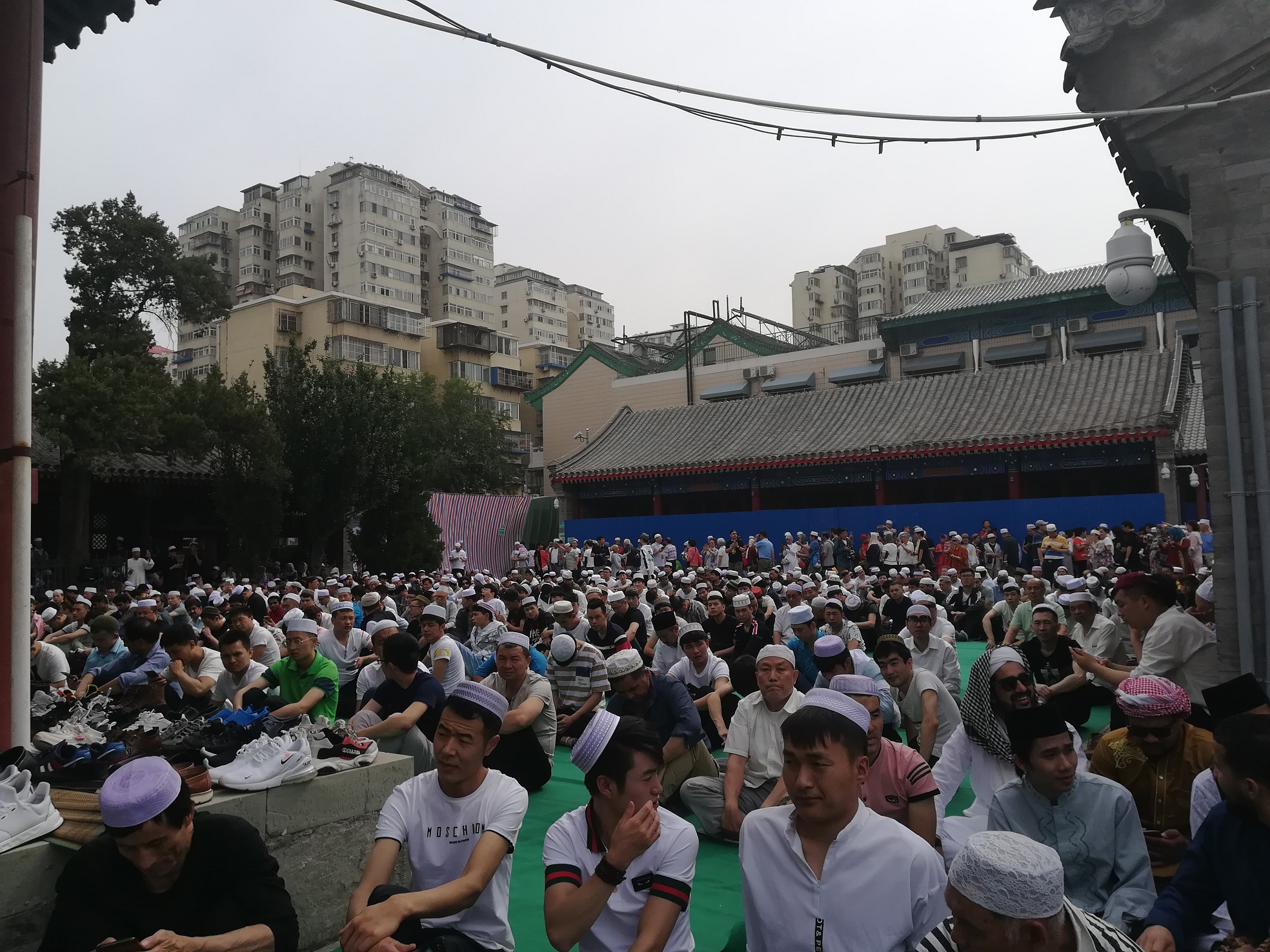Millions of Muslims in China, on Wednesday, joined other faithful around the world to celebrate Eid al-Fitr festival, which marks the end of the fasting month of Ramadan.
The timing of Eid al-Fitr, or “the festival of breaking the fast”, begins with the sighting of the new moon, and it often varies from country to country. While most countries started Eid on Tuesday, in China and other Asian countries, it was celebrated on Wednesday.
Having observed the month-long fasting in a non-Ramadanic atmosphere, I decided to offer the Eid al-Fitr prayer at Niujie – a neighbourhood hosting not only one of China’s most historical and majestic mosques, but also the largest steadfast community of about 10,000 Chinese Muslims in Beijing, the country’s capital.
As I exited from the Guang Anmennei train station and headed down the Niujie Street (Ox Street) in the Beijing’s Xicheng District, I watched as hundreds of people donning taqiyah, a short, rounded skullcap, streamed into the many groceries shops adorned with curlicues of Arabic.
It was an atmosphere of excitement and activities at Niujie. The roads leading to the mosque were closed to motorists, the street erupted in an explosion of colour, exchange of greetings and smiles, and despite thousands of people filing in to the area, there was neither a chaotic scene nor obstruction of traffic flow.
A visit to the cornerstone of the neighbourhood, the Niujie Muslim Supermarket, offered a taste of Beijing traditional snacks. The store enjoys the biggest patronage in the area. Shoppers patiently followed the queues to vendors selling a variety of moreish treats.

Inside the supermarket, I was greeted with an intriguing array of nuts and bountiful dried dates and fruits imported from China’s Muslim region of Xinjiang. A closer look showed products bear the stamp proclaiming them certified halal.
Heading further down toward the mosque, police were on standby to provide security cover, while visiting worshipers passed through a metal detector doors positioned few feet away from the main entrance.
Inside the premises, I was pleasantly surprised by the courteous behaviour demonstrated by an abundance of cheerful, enthusiastic volunteers, who, with a cheery face, approached worshippers and guided their way to the praying area.

First built in 996, the Niujie Mosque (literally Ox Street Mosque) has a history that stretches back over a thousand years, during which time it has undergone numerous refits and extensions, and has hosted Muslims from all over the world to worship.
The mosque has a strictly central axel balanced layout covering near 10,000 square meters area, and is structurally based on traditional Chinese wooden palaces, yet adopts typical Arabic-style decorations.
The layout is symmetrical and compact. The entrance gate is fronted by a large wall with a white marble pedestal, which stretches for around 44 yards (40 meters). After passing through the entrance gate, visitors can see the Watching Moon Tower, a hexagonal, two-storied structure reaching over 33 feet (10 meters) tall and housed under a golden-glazed roof. The tower is so named because it was used by the imam to observe the position of the moon to determine times for fasting.
Covering an area of 700 square yards (600 square meters), the prayer hall has the capacity for a few thousand worshippers. The interior is covered with an impressive infusion of traditional Chinese and Arabic designs. The red columns are decorated ornately with gold Arabic inscriptions and motifs, and stretch to the far end of the hall. Outside of the prayer hall, two stele pavilions sit either side of the hall. In each of them stands a stone tablet detailing the history of it.
For most of the day, the ancient mosque offers a quiet sanctuary from the bustle street life, but the place comes to life with worshippers at prayer times. On Eid-ul-Fitr day, it witnessed the biggest congregations of Muslims in Beijing. The mosque was also opened to non-Muslims who had come to celebrate the Eid festival in a show of solidarity.
In his sermon after the prayer, the Imam urged Muslims to allow the spirit of Ramadan permeate their lives after the holy month.
“Today, Almighty Allah has made eating and drinking Halal for you and prohibited fasting. So eat and drink but do not be extravagant. Be quick and constant in seeking Allah’s forgiveness. Fear Allah and allow the spirit of Ramadan to remain with you,” the Imam preached.
Then it was time for greetings. People of different colours, race and tongue exchanged pleasantries, hugged and took pictures together. The scene reminded me of Islam’s respect for diversity and racial equality.

Celebration was later moved on to feasting on traditional Chinese cuisines at the many stores and eateries that lined the street.
Indeed, my Eid odyssey to Niujie not only offered me a striking experience of love, unity and brotherhood, but also an insight about Islam’s place in Chinese cultural history.

 Join Daily Trust WhatsApp Community For Quick Access To News and Happenings Around You.
Join Daily Trust WhatsApp Community For Quick Access To News and Happenings Around You.

